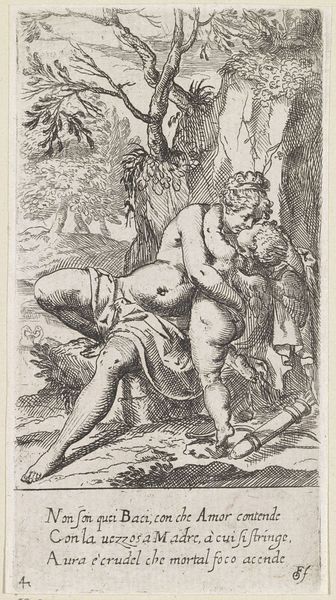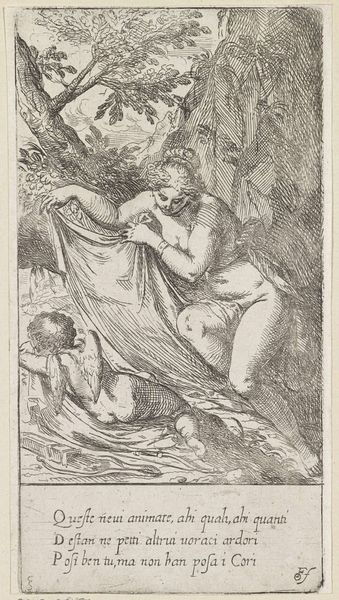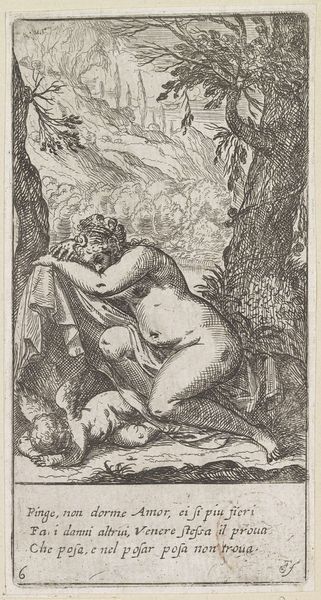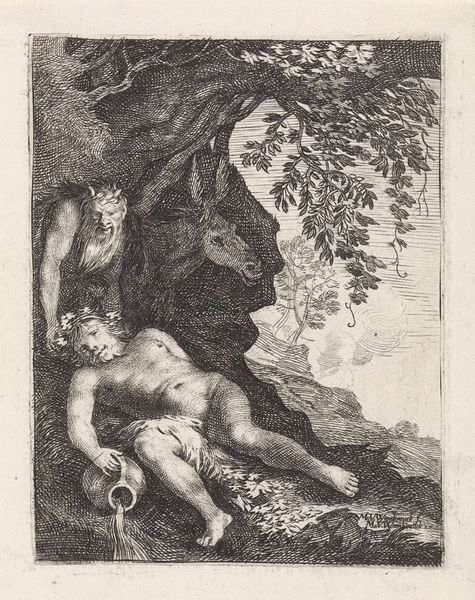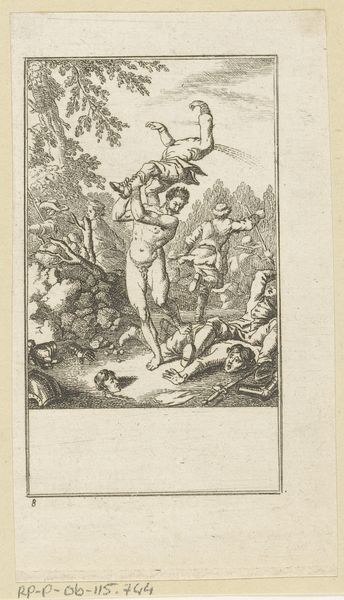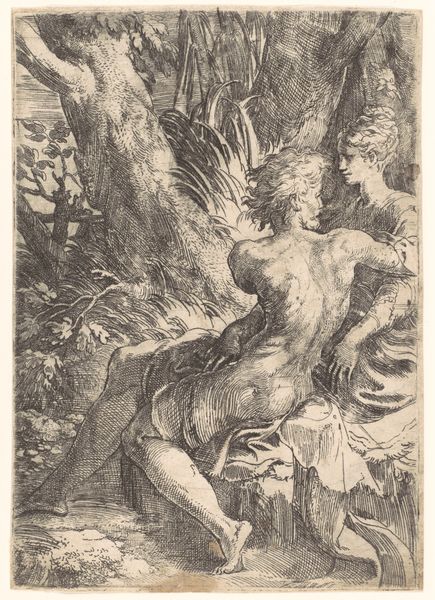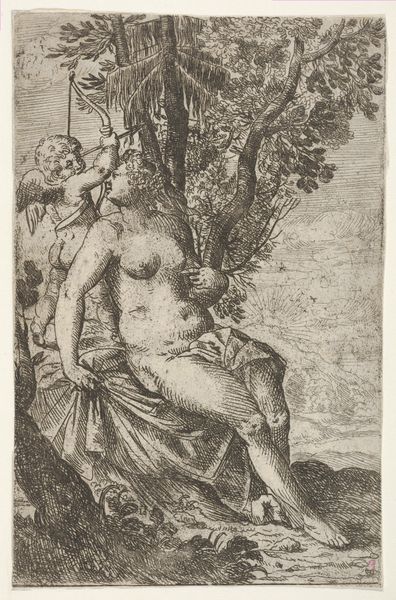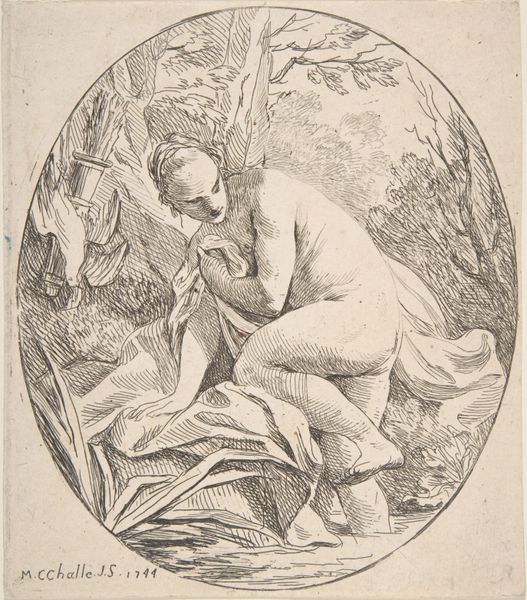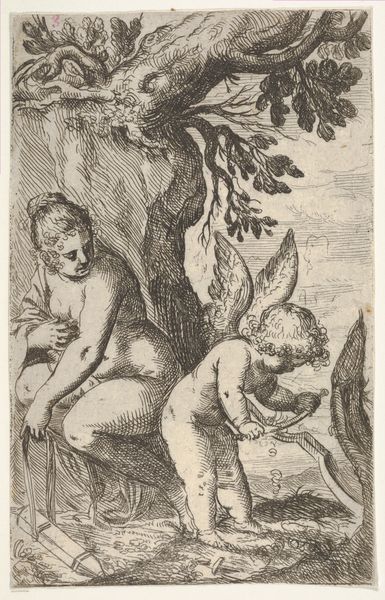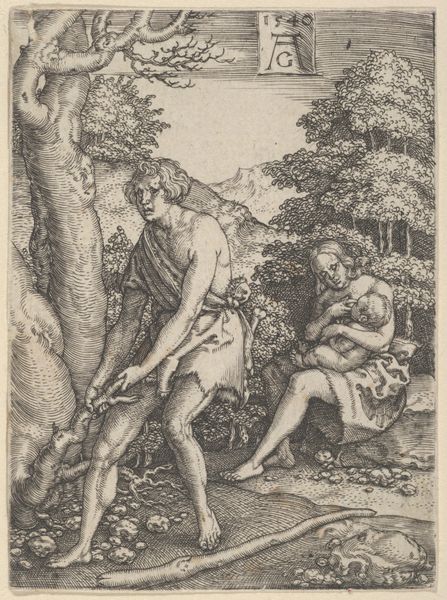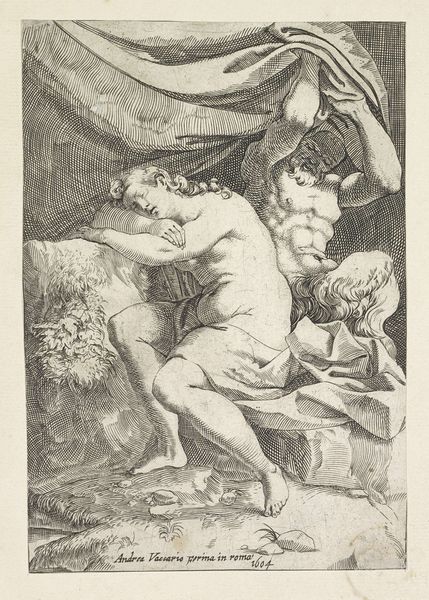
drawing, etching, ink, engraving
#
drawing
#
ink drawing
#
baroque
#
pen drawing
#
etching
#
landscape
#
figuration
#
ink
#
history-painting
#
engraving
Dimensions: height 195 mm, width 128 mm
Copyright: Rijks Museum: Open Domain
Curator: It has a nervous energy, doesn’t it? Fervent hatching describes figures set amongst a backdrop of anxious lines. Editor: Indeed. What we are seeing here is Cornelis Schut's "Pan en Syrinx," dating back to somewhere between 1618 and 1655. This etching, engraving, and ink drawing, now held at the Rijksmuseum, depicts a scene brimming with classical myth. Curator: Right away, the eye is drawn to Syrinx who is clearly fleeing from the unwanted advances of Pan. Her frantic expression tells us everything, as does the surrounding environment rendered with what almost feels like visible tension. You feel her desperation. Editor: Absolutely. The composition draws on established visual tropes but Schut infuses it with the heightened emotion characteristic of the Baroque period. Look closely at the landscape—notice how nature seems to mirror Syrinx’s emotional turmoil, almost acting as an extension of her inner state. Curator: We see this narrative of female transformation and escape so frequently across cultures and history. From Daphne turning into a laurel tree, to any number of women shapeshifting in Indigenous folklore...it speaks to a deep psychological need to escape constraint, to reclaim agency by shedding the skin one is trapped in. Editor: Transformation, certainly a core theme. But within the cultural context of 17th-century Europe, Schut's depiction of Pan is equally noteworthy. Pan was of course a fixture in classical art. Here, his image might even be tapping into a broader anxiety around paganism and uncontrolled desires which Christianity tried to manage. Curator: Interesting how Schut chose this very tactile, almost frantic medium to capture such a loaded moment. Editor: An excellent point. The very lines themselves convey urgency, reminding us of the dynamic and often fraught relationship between mythology, art, and society at this time. Curator: Seeing it like this, it transcends the page, morphing into a mirror reflecting both personal and broader anxieties. Editor: Exactly! Art, always intertwined with life's tapestry, revealing and refracting in equal measure.
Comments
No comments
Be the first to comment and join the conversation on the ultimate creative platform.
